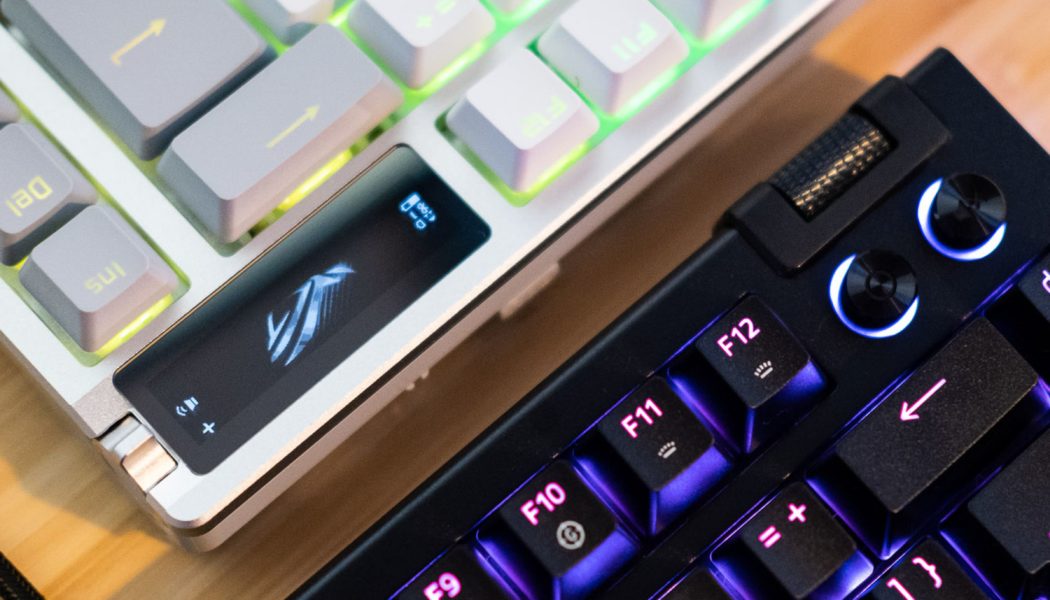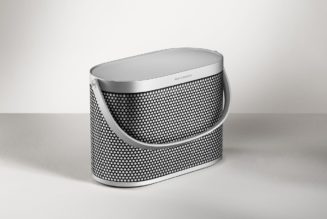The new Razer BlackWidow V4 75% and Asus ROG Azoth play to traditional gaming strengths, while feeling and sounding significantly nicer to type on.
Share this story
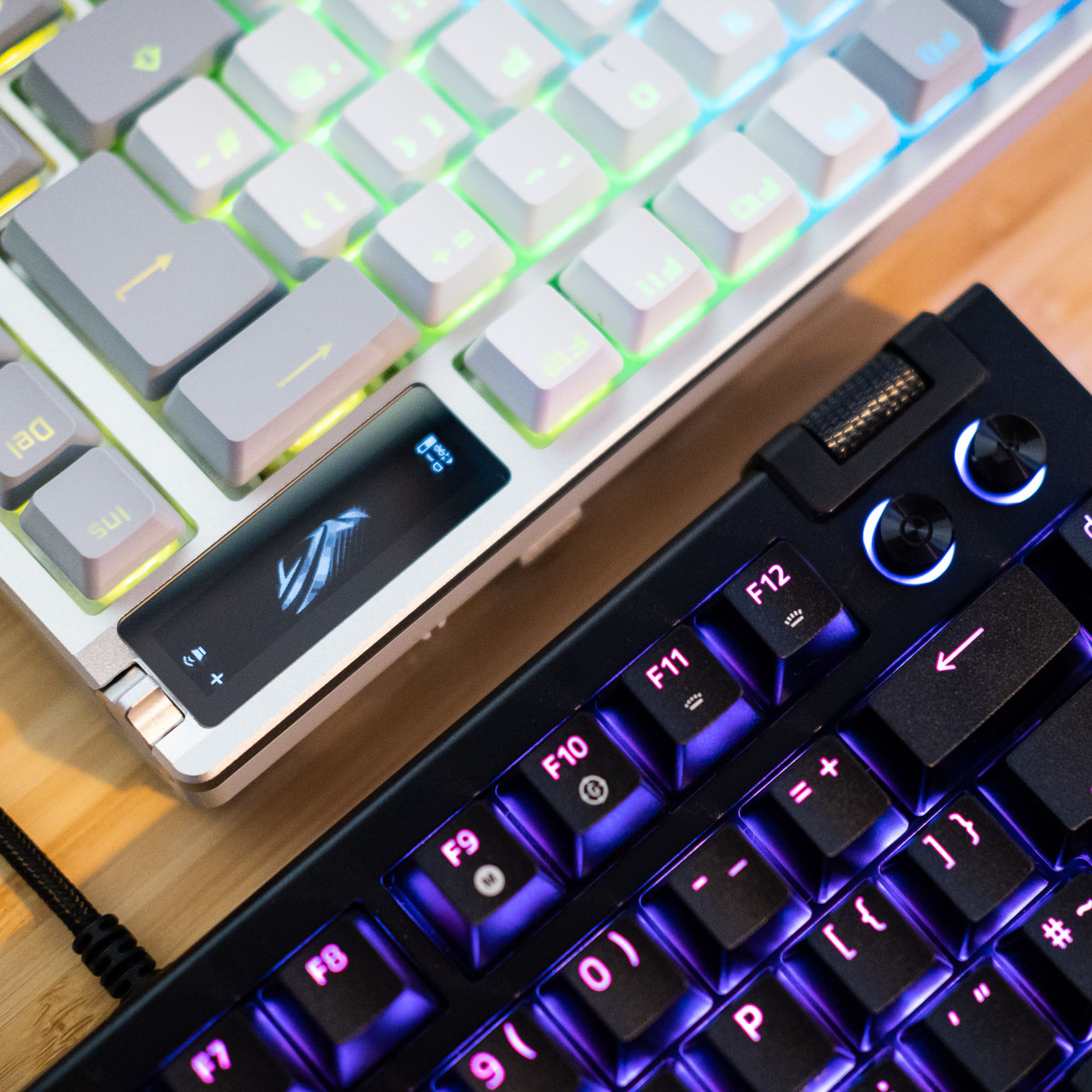
Mechanical keyboard obsessives — those people who think nothing of spending a hundred dollars on a set of keycaps or individually taking apart dozens of switches to apply just the right amount of their favorite kind of lube — have historically looked down on keyboards from big gaming brands. Gaming keyboards are seen as a perfectly reasonable gateway drug, but there are plenty who’ll have you believe that they can’t hold a candle to enthusiast-focused “custom” keyboards.
Much of this snobbery is tongue in cheek, but there’s also a grain of truth to it. Put a typical mass-market gaming keyboard next to the kind of DIY keyboards sold in limited runs or even something like Keychron’s Q-series, and the difference in feel is night and day. Enthusiast keyboard manufacturers place a bigger emphasis on reducing unpleasant sounds like rattling and metallic pinging, and their keyboards often feel crisper and smoother to type on.
But this year, a pair of keyboards from Asus and Razer are attempting to buck this trend. Over the past couple of weeks, I’ve been trying out Razer’s $189.99 BlackWidow V4 75% and the $249.99 Asus ROG Azoth, two keyboards that incorporate construction techniques and modifications favored by enthusiasts without losing the features that make gaming keyboards appealing.

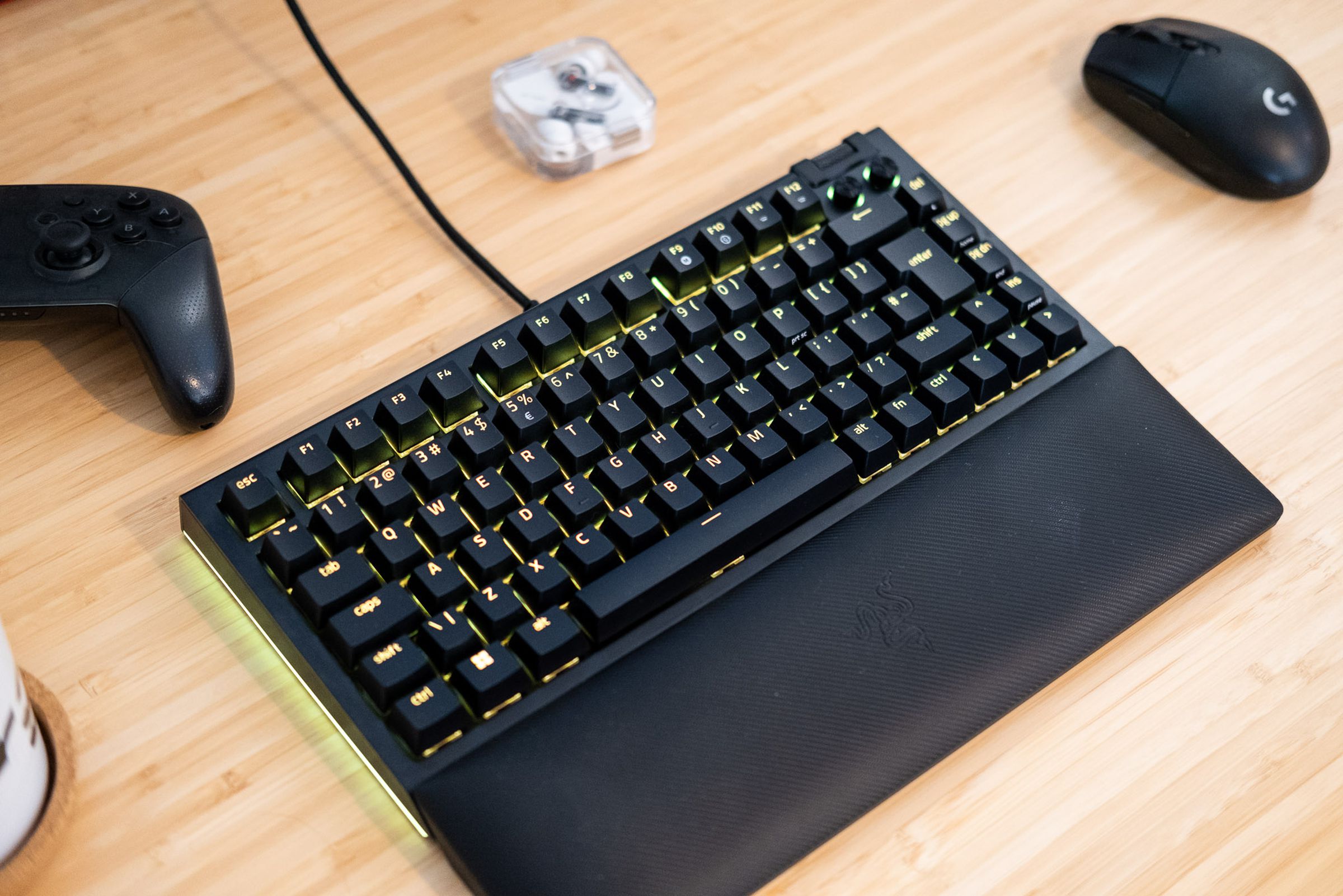


Their pricing might be premium, but it’s not far off from what we’ve previously seen gaming brands charge for their flagship keyboards. The new 75 percent BlackWidow is priced between Razer’s previous BlackWidow V4 ($169.99) and BlackWidow V4 Pro ($229.99) and is competing against Keychron’s Q1, which currently retails for $170.10 with a volume knob. Even the more expensive ROG Azoth isn’t the most expensive keyboard that Asus has ever released — the ROG Claymore II launched with a $269.99 price tag two years ago.
Despite their enthusiast focus, both the ROG Azoth and BlackWidow V4 75% still look like traditional gaming keyboards. There are no tall retro-looking multicolored keycaps here or the kinds of super chunky cases popular among posters on r/MechanicalKeyboards. Instead, you get monochrome color schemes, angular fonts, and plenty of RGB lighting.
But there are also some visible influences from the keyboard community. Both models come with 75 percent layouts, for example, which have a more compact laptop-style design with no numpad. It’s an unusual layout by traditional keyboard standards but has quickly become one of the most popular layouts for enthusiasts. They both also have their own takes on the increasingly widespread volume knob on the top right — the BlackWidow has a volume roller, while the Azoth has a three-way control rocker next to its fancy OLED display.

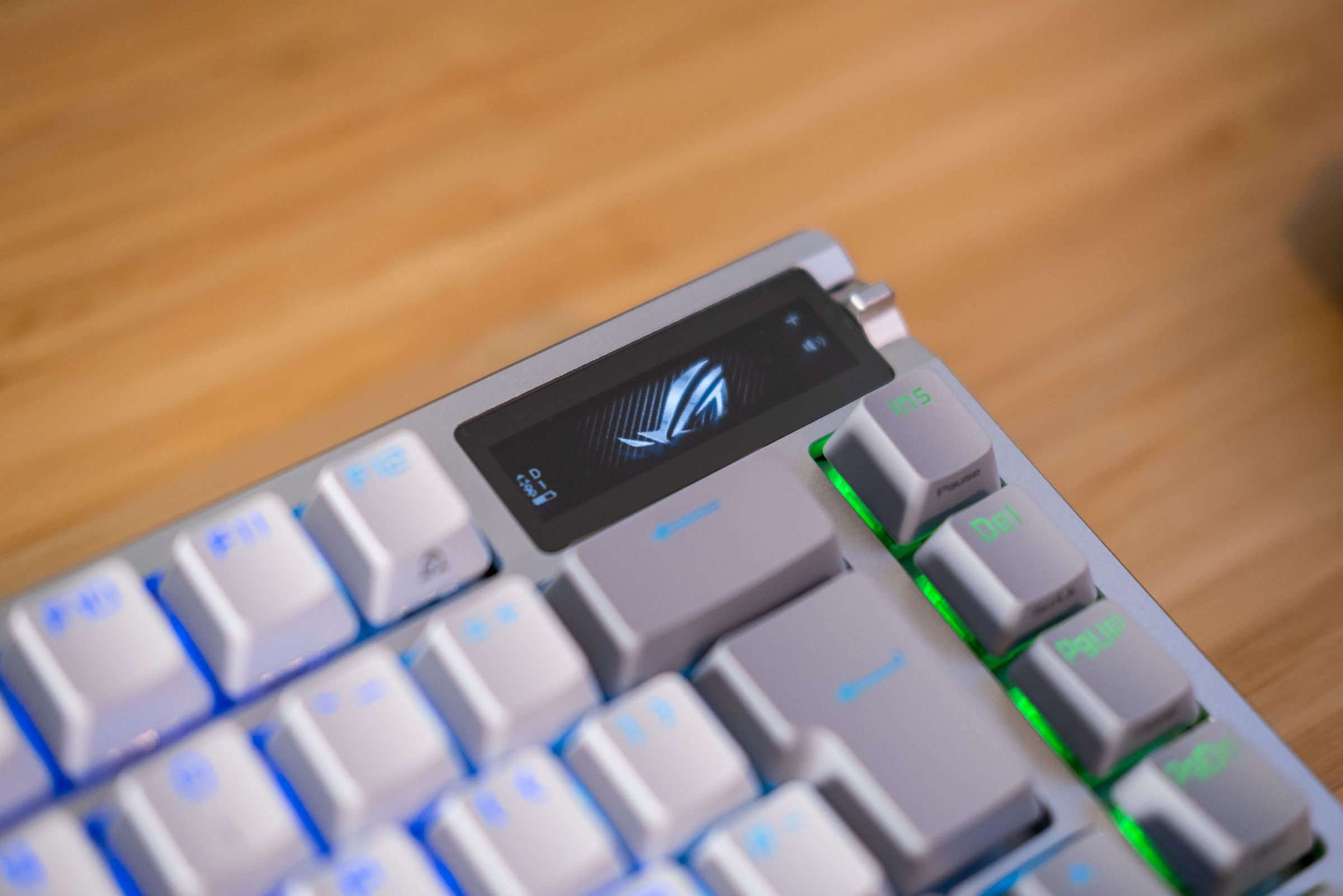

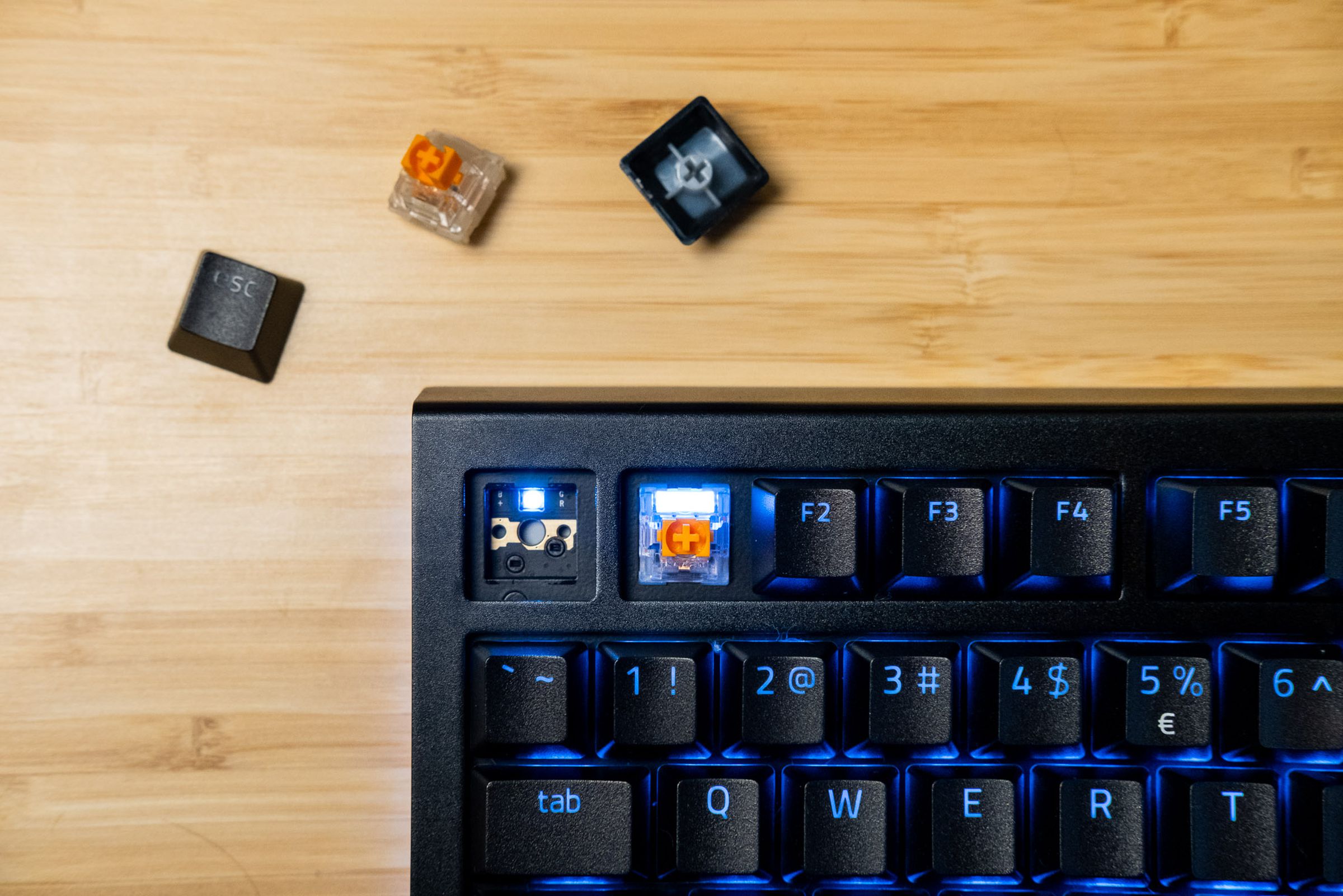
Layouts are one thing, but more important is what’s going on internally, where both Razer and Asus have learned from the mods and construction techniques that have become popular with hobbyists. Both keyboards use a gasket-mounted design that has their switch plates sit on squishy material so they have a slight bounce to them as you type, and you better believe that both keyboards have lubed stabilizers (the mechanism built into bigger keys like the space bar to stop them from wobbling but that can rattle if not lubricated).
Perhaps most tellingly, Razer has even gone so far as to pre-apply a layer of tape to the bottom of the BlackWidow V4 75%’s PCB, emulating the popular DIY “tape mod” that enthusiasts often use to improve the sounds of their keyboards. That comes in addition to layers and layers of sound-dampening foam: two for the Razer and three for the Asus. The general idea for these mods is to cut down on unpleasant pinging or reverberations and create a poppier or more “marbly” sound. There’s a lot of debate about which combination of mods is best (and the specifics of which switches you’re using will also play a part), but what’s nice here is that you have the freedom to experiment by removing layers of sound-dampening foam to hear the difference for yourself.
Both keyboards are designed to make mods like these relatively painless. There are easily accessible screws on their undersides to let you get inside, and the keyboards are also hot-swappable, meaning you can remove and replace their switches without the need to get out a soldering iron. Both even support adding fancier aftermarket PCB-mount screw-in stabilizers if you don’t care for the plate-mounted stabilizers they ship with.

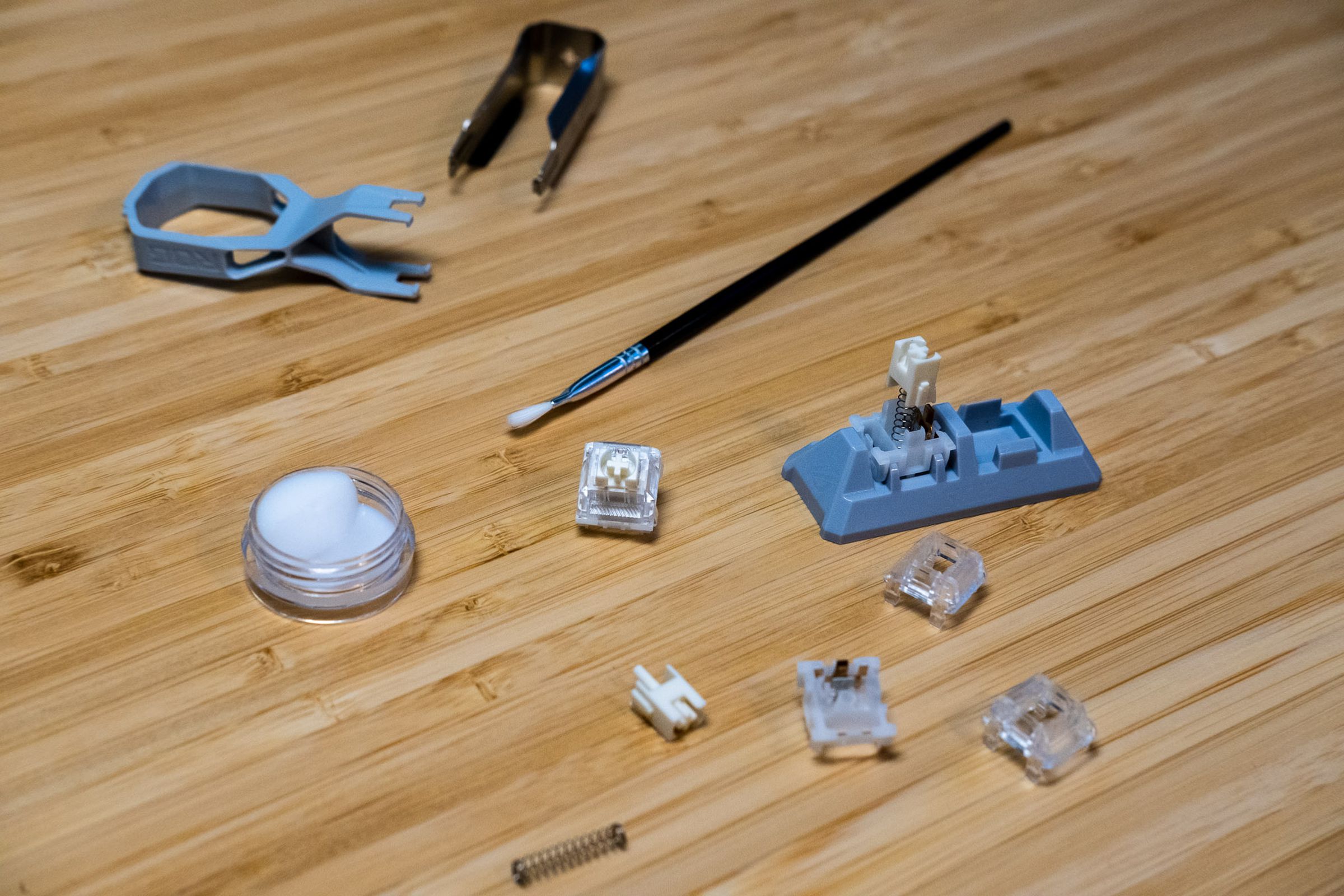
The most delightfully overkill enthusiast feature of the ROG Azoth comes in its box of accessories, which includes not only the increasingly standard switch and keycap puller (an accessory you also get with Razer’s BlackWidow) but also tools to tinker with the innards of the keyboard’s switches. There’s a switch opener to crack them open, a little brush, a pot of Krytox lube, and even a tray to put your switches in while you’re working on them. I will not claim to be a switch-lubing expert, and I have no doubt there are better tools out there for this job, but it’s a neat kit to find included in the box and really underscores Asus’ target market for this keyboard.
Though the keyboards have been built with modding in mind, I wouldn’t say I felt an immediate need to mod them. Out of the box, both keyboards feel great to type on. The Razer BlackWidow V4 comes equipped with the company’s own pre-lubed Orange Tactile switches, and while there are a couple of different switch options available for the ROG Azoth, I preferred the company’s own pre-lubed linear NX Snow switches. Here’s how they both sound:
The Asus (particularly with its NX Snow switches) is definitely the better feeling and sounding of the two, but it’s also more expensive, and the Razer BlackWidow V4 75% is still a huge step up compared to Razer’s previous keyboards.
Importantly for gamers, Razer and Asus have been able to draw from the keyboard community while also playing to their own gaming strengths. The Razer BlackWidow V4 75%, for example, supports up to an 8,000Hz polling rate, which theoretically reports keypresses to your computer around eight times faster than most other keyboards. (The ROG Azoth, meanwhile, offers a more typical 1,000Hz polling rate but makes up for it with wireless connectivity — that 1000Hz rate is available wired or using the included 2.4GHz dongle; it also has Bluetooth at the usual 125Hz polling rate.)
I also want to take a moment to mention the ROG Azoth’s neat little two-inch OLED display, which I ended up liking more than I expected to. Although it spends most of its time showing a looping animation of the Asus ROG logo by default, it’s helpful when you start using the three-way volume rocker to adjust other aspects of the board, like its lighting effects. I also appreciated its small status elements, like showing the keyboard’s battery level, connectivity status, or whether it’s set to PC or Mac mode. Both keyboards are readily available in UK-ISO keyboard layouts, which is often not an option with smaller manufacturers.



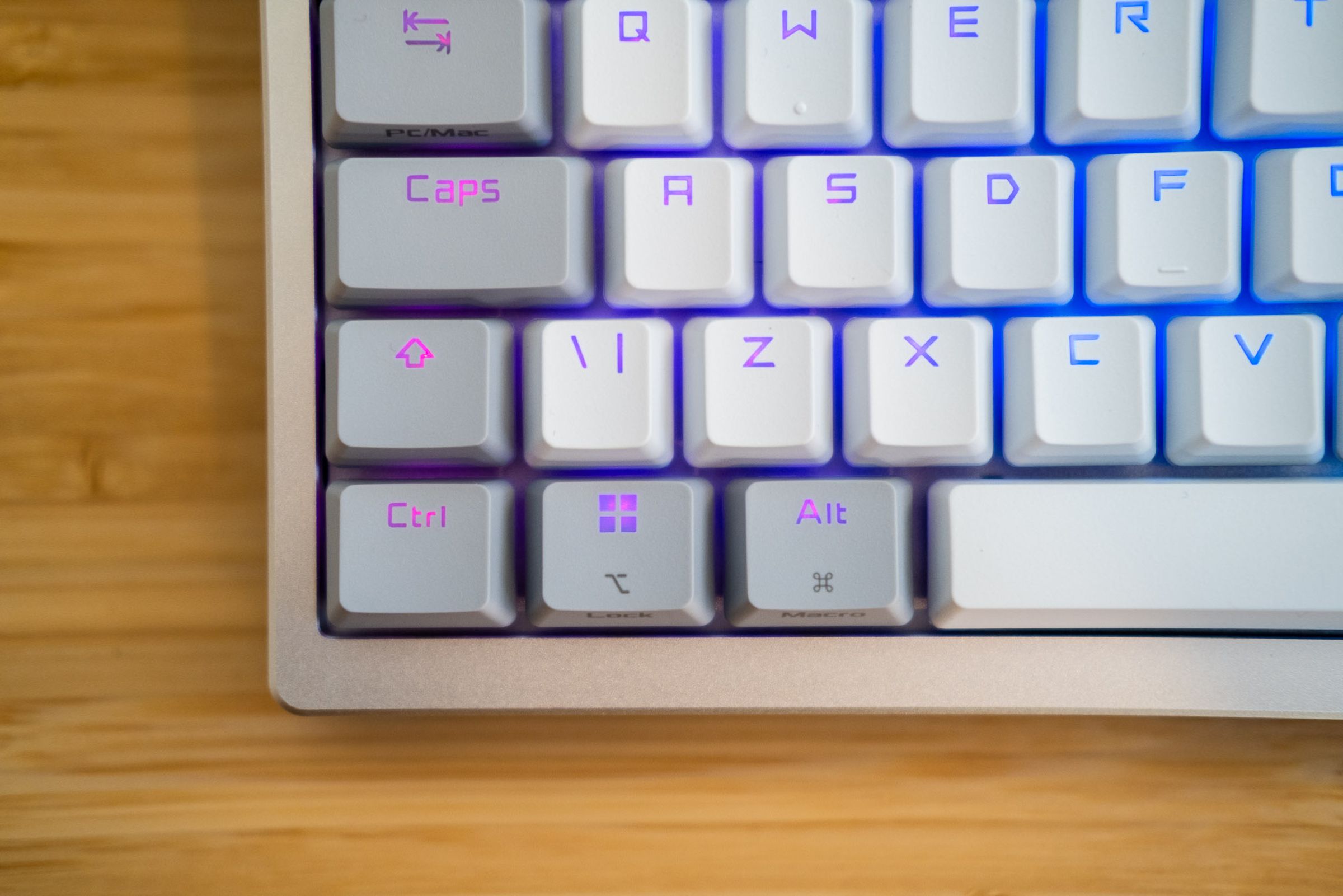
Although both keyboards tick significantly more enthusiast keyboard boxes, there are some areas where Asus’ and Razer’s priorities conflict with what hardcore keyboard people are after. Both peripherals feature north-facing switches, for example, which is better for their shine-through RGB legends but can create compatibility issues with some thicker aftermarket keycaps.
Plus, of course, Razer and Asus have their own proprietary companion software. I suppose that’s inevitable given Razer’s emphasis on its Chroma RGB ecosystem, not to mention the fact that the Asus software needs to let you customize the keyboard’s OLED display, but I’d love to have the option of using the powerful and familiar VIA app.
It feels almost inevitable that these keyboards won’t offer everything that enthusiasts are after. But they’re still a big step up compared to what big brands have typically offered, and Asus and Razer have achieved this while maintaining what people have historically liked about their peripherals, all of which is great news if you’re in the market for a gaming keyboard. But I hope that smaller enthusiast manufacturers can continue to innovate and find ways to run rings around their bigger competitors.
Photography by Jon Porter / The Verge
